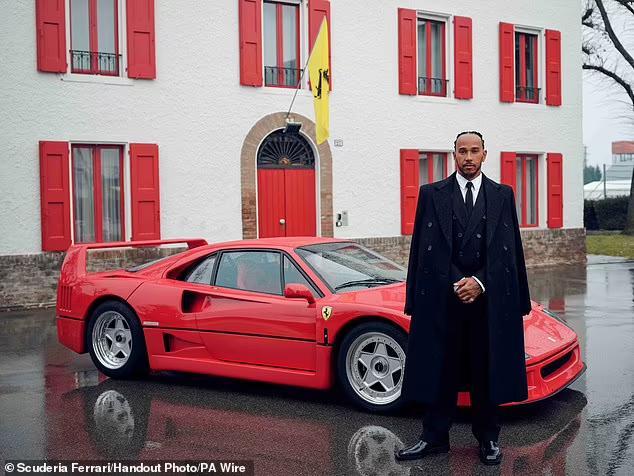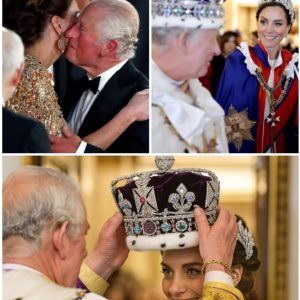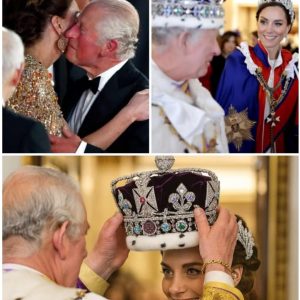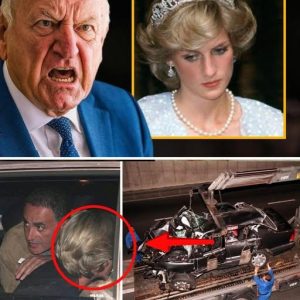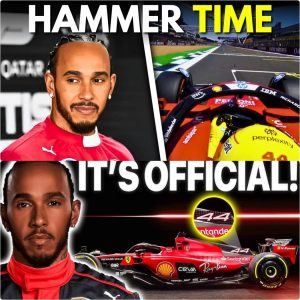The Prancing Horse’s Gamble: How Hamilton’s Ferrari Dream Became a Looming Nightmare and Sainz’s Redemption Arc Began
In the world of Formula 1, where ambition and machinery collide at 200 miles per hour, few announcements have ever detonated with the force of Lewis Hamilton’s move to Scuderia Ferrari. It was billed as the blockbuster union of the sport’s most successful driver and its most iconic team—a partnership destined to paint the pinnacle of motorsport red and rewrite the history books. The Tifosi, Ferrari’s legion of passionate fans, dared to dream of championship glory, envisioning the seven-time world champion as the messiah who would end their long title drought. But as the 2025 season has unfolded, that vibrant dream has begun to fade, replaced by the grim, creeping shadows of a nightmare.
The fairy tale has soured. The prancing horse, once a symbol of untamed power and grace, now appears to be a bucking bronco that even the maestro Hamilton cannot tame. The much-celebrated move, intended as the glorious final chapter of a legendary career, is fast becoming a cautionary tale of miscalculation, immense pressure, and the cruel twists of fate that only F1 can deliver. For Hamilton, the crimson race suit, once a symbol of a lifelong ambition fulfilled, now feels heavy with the weight of unfulfilled expectations.

The cracks began to show early. Adapting to a new team after more than a decade of unparalleled success with the well-oiled machine of Mercedes was always going to be a monumental challenge. But few, least of all Hamilton himself, anticipated just how arduous the transition would be. Ferrari Team Principal Fred Vasseur openly admitted that both he and Hamilton had “stupidly” underestimated the cultural and technical chasm between the British precision of Mercedes and the passionate, often chaotic, Italian soul of Ferrari. The car, the engineering philosophy, the very language of communication—it was all a world away from the environment where Hamilton had become a titan.
Publicly, Hamilton has tried to maintain a brave face, but the strain is palpable. His frustration has boiled over on several occasions, most notably after a disastrous qualifying session in Hungary where he starkly called himself “useless” on the team radio. It was a moment of raw, unfiltered anguish that sent shockwaves through the paddock. Here was the most decorated driver of all time, a man synonymous with confidence and masterful control, sounding utterly defeated. Whispers grew louder—was the pressure of carrying a nation’s hopes and a legendary team’s legacy finally getting to him?
The SF-25, the car entrusted to carry him to glory, has been a source of constant struggle. Inconsistent, unpredictable, and seemingly out of step with Hamilton’s driving style, the machine has failed to deliver. While his teammate Charles Leclerc has often managed to extract more from the temperamental car, Hamilton has looked uncharacteristically lost, battling for minor points instead of podiums. The familiar sight of Hamilton dominating a race weekend has been replaced by images of him locked in intense, often tense, debriefs with his engineers, searching for answers that remain elusive.
In a sport where the psychological game is as crucial as the engineering, this persistent struggle has fueled a narrative of decline. The dream move is being questioned not just by pundits, but reportedly from within the Maranello camp itself, creating a pressure cooker environment that threatens to derail the entire project before it ever truly began.
As Hamilton’s Ferrari chapter spirals into uncertainty, a parallel story of extraordinary resilience and vindication is being written by the very man he replaced: Carlos Sainz. When the news of Hamilton’s signing broke, it was Sainz who was left without a seat, the odd man out in F1’s brutal game of musical chairs. The Spaniard, a proven race winner for the Scuderia and a favorite among the Tifosi for his tenacious spirit, was unceremoniously cast aside. He admitted the decision, which he was “99% sure” wouldn’t happen, hurt deeply. It was a professional betrayal that could have broken a lesser driver.
Instead, it ignited a fire.
Sainz responded not with bitterness, but with breathtaking performances on the track throughout his final season in red. He drove with a liberating blend of aggression and intelligence, securing stunning victories and consistently outperforming expectations. It was as if being freed from the political pressures of Ferrari unlocked a new level of his talent. He wasn’t just driving for his future; he was crafting a spectacular redemption arc in real-time, reminding the entire grid of his elite capabilities.
His stellar form secured him a multi-year deal with Williams, a historic team on a mission to recapture its former glory. While a move down the grid on paper, it represents a new beginning for Sainz—a chance to be the undisputed leader and build a team around him. More poignantly, every strong performance he delivers in Williams blue serves as a stark, silent rebuke to the decision-makers at Ferrari.
The irony is not lost on anyone in the paddock. While Ferrari struggles with its new superstar, the driver they deemed expendable is thriving. This has led to an almost unthinkable rumor gaining traction: a potential shock return for Sainz to Ferrari. Whispers of escape clauses in contracts and backstage discussions have added a layer of high-stakes drama. Could Ferrari, in a stunning admission of a monumental misstep, look to bring back the “Smooth Operator” to stabilize a ship being rocked by turbulent seas?
For now, it remains speculation. But the very existence of such a rumor underscores the depth of the crisis unfolding. Hamilton’s dream has inadvertently become Sainz’s vindication. The saga has evolved into a fascinating human drama, a tale of two champions on divergent paths. One, a legend grappling with the potential of a tarnished legacy, discovering that the grass isn’t always greener. The other, a resilient hero forged in the fire of rejection, proving that a setback can be the setup for a magnificent comeback.
The remainder of the 2025 season is more than just a series of races. It is a battle for pride, for legacy, and for the future direction of Formula 1’s most storied team. Can Lewis Hamilton, the master of reinvention, dig deep and turn his Ferrari nightmare back into the dream he signed up for? Or will Carlos Sainz’s redemption arc serve as the final, damning verdict on the Prancing Horse’s billion-dollar gamble? The checkered flag has yet to fall on this captivating, high-octane drama.
